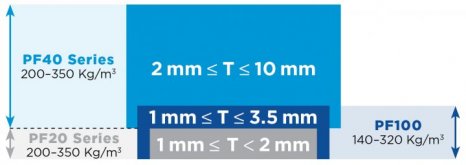Q-Dog
¯\_(ツ)_/¯
I bought my batteries before I found this forum based solely on the capacity I needed to run my fridge and the fact they were in the US. If I had found the forum first I would probably still be trying to decide what to get.  I'd probably also still be waiting on cells to ship from china.
I'd probably also still be waiting on cells to ship from china.
My cells came with a couple of long zip ties and a small roll of double sided squishy tape to stick between them. I thought the foam was an odd choice until I saw the cells beginning to swell and the pack got over 1/4" wider the first time I charged them up. I want to add capacity down the road so may have to reconfigure and I didn't want to damage the cells trying to pull them apart, so I instead slipped some 1mm thick foam sheets between my cells. I cut the foam from some packing envelopes that got away from someone and floated into my yard after a thunderstorm. I cut them a little bit long and used slits in the tops to keep the bms wires organized. After seeing a couple of drop-in LiFePo4 battery teardown and reading a couple of posts here on the forum I modified my cell holder to fit snug around the cells and constrain them, and I haven't noticed the pack moving any more. These are 200ah cells. I imagine the larger cells expand more.
Also, before I found the foam envelopes in the yard, I was going to experiment with paperboard or cardboard or construction paper between the cells to allow them to move a little bit. I was also considering something like felt or fiberglass matt, anything to let them flex a little bit but remain constrained.

My cells came with a couple of long zip ties and a small roll of double sided squishy tape to stick between them. I thought the foam was an odd choice until I saw the cells beginning to swell and the pack got over 1/4" wider the first time I charged them up. I want to add capacity down the road so may have to reconfigure and I didn't want to damage the cells trying to pull them apart, so I instead slipped some 1mm thick foam sheets between my cells. I cut the foam from some packing envelopes that got away from someone and floated into my yard after a thunderstorm. I cut them a little bit long and used slits in the tops to keep the bms wires organized. After seeing a couple of drop-in LiFePo4 battery teardown and reading a couple of posts here on the forum I modified my cell holder to fit snug around the cells and constrain them, and I haven't noticed the pack moving any more. These are 200ah cells. I imagine the larger cells expand more.
Also, before I found the foam envelopes in the yard, I was going to experiment with paperboard or cardboard or construction paper between the cells to allow them to move a little bit. I was also considering something like felt or fiberglass matt, anything to let them flex a little bit but remain constrained.

Last edited:





